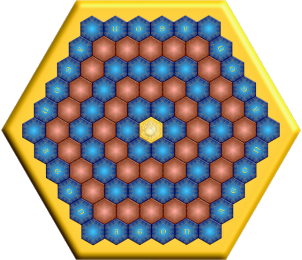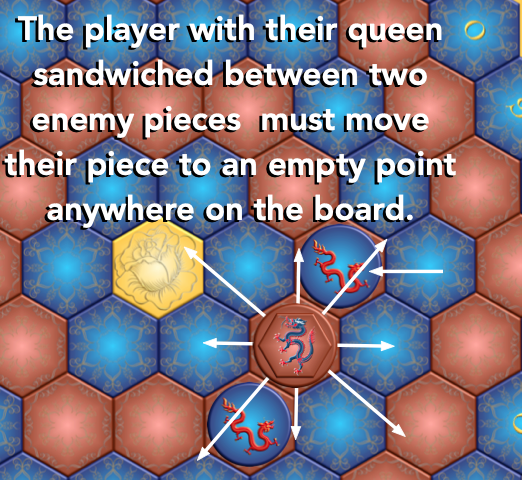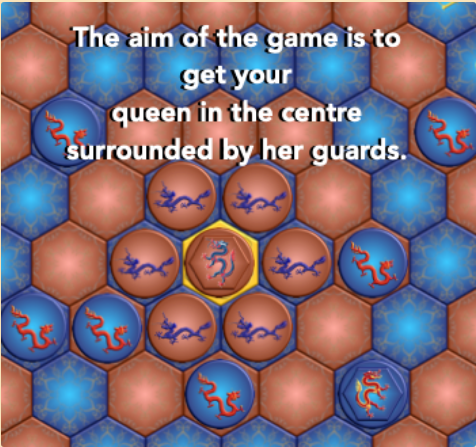AGON (The Queen’s Guards)
Agon (or Queen’s Guard, Queen’s Guards, Royal Guards) is a strategy game for two playersand played on a 6×6×6 hexagonal game board. Agon may be the oldest board game played on a hexagonally-celled board, first appearing in France as early as the late eighteenth century. The game reached its greatest popularity a century later when the Victorians embraced it for its blend of simple rules and complex strategy.
Below Agon board and initial setup. For this diagram, guards are circular pieces, queens are hex-shape on circular pieces, and the throne is marked with a rose.
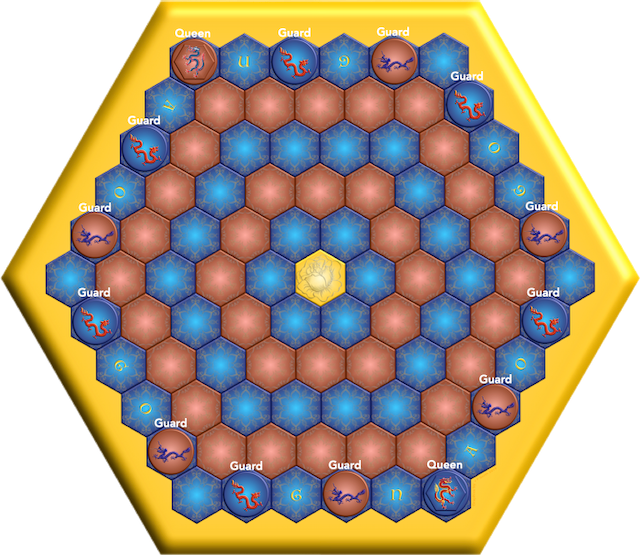
Text by R.C. Bell from Board and Table Games from many Civilisations.
In this game for two players each has a queen and six guards of their own colour, arranged on the hexagonal board as shown.
1. The choice of first move is decided by the throw of a die.
2. The players move their pieces alternately, one space forwards or sideways. They cannot move backwards except in accordance with rules 3 and 4.
3. If a piece other than the queen has enemy pieces on the contiguous spaces on either side of it, on the player’s next move it must be lifted and placed on a space in the outermost row.
( Page taken from https://a4games.company
4. If the queen is sandwiched between enemy pieces she also, at the next move, must be lifted, but can be placed on any vacant space on the board.
5. No piece can be moved between two enemy pieces.
6. The object of the game is to place the queen on the central hexagon with her guards posted around her on the six adjacent spaces.
7. Only a queen may move onto the central space.
8. If two or more pieces are liable to be moved backwards at the same time, and one is the queen, she is moved first; and the others are removed one at each move; the order being optional.
9. If a piece is touched, it must, if possible, be moved.
10. If a player’s six guards occupy the inner circle surrounding an empty central space, the player loses the game, as neither player can achieve the game’s object.
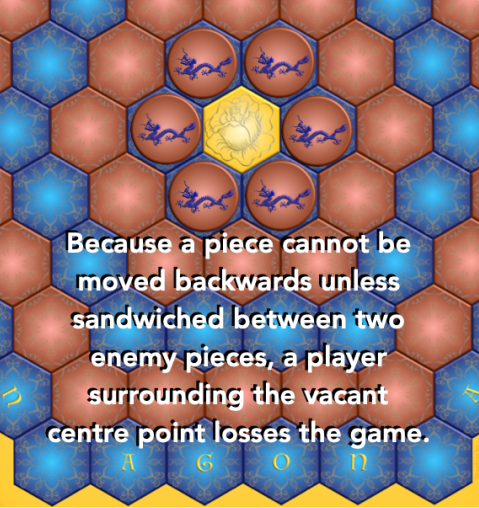
Hint on play
(a) It is usually unwise to throw back only one enemy piece; this often allows it to be placed in a better section of the board than that from which it was removed.
(b) It is wiser to try for a position from which in successive moves a player can throw back several enemy pieces, and so be able to advance his own towards the centre before he can be overtaken.
(c) It is unwise to push the queen too far forward ahead of her guards.
(d) It is often helpful to hold one piece back in the early stages of the game, but to keep it in a position to reach the centre quickly when the game reaches a crises.
